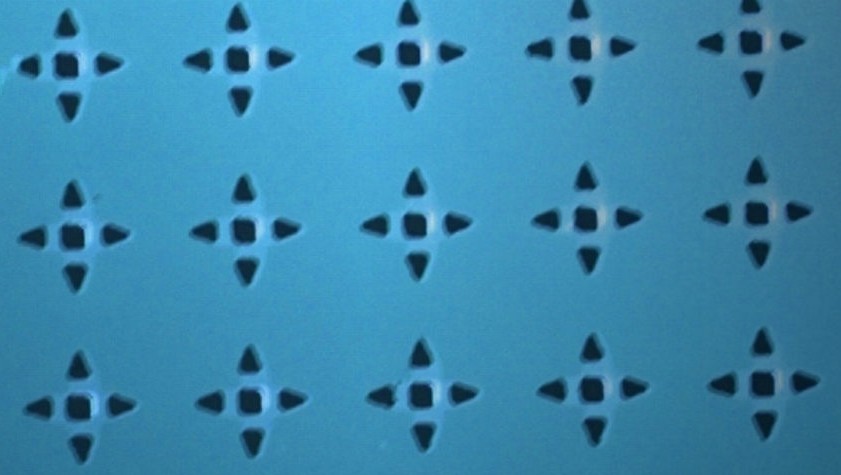Researchers at Yale have developed a robotic fabric, a breakthrough that could lead to such innovations as adaptive clothing, self-deploying shelters, or lightweight shape-changing machinery.
An international team of Johannes Kepler University researchers is developing robots made from soft materials. A new article in the journal Communications Materials demonstrates how these kinds of soft machines react using weak magnetic fields to move very quickly—even grabbing a quick-moving fly that has landed on it.
There has been an increase in the demand of service robotics solutions across the world owing to greater need for automation of services. With the increasing use of cobots in service applications, the overall demand for robotics has increased drastically over the years.
Since the outbreak of the COVID-19 pandemic, we’ve seen many industries go down due to different reasons. However, some industries were able to get past these hurdles and find in the current pandemic the source for their growth. Robotics is one of these industries.
A combined team of researchers from Korea and Germany has built an AI-based curling robot that is able to compete at a professional level. In their paper published in the journal Science Robotics, the group describes how their robot was built, how it was trained and how well it performed when matched against professional human players. Johannes Stork with Örebro University has published a Focus piece discussing the work by the team in the same journal issue.
Back in 2013, local Brooklyn papers were excitedly reporting on a new initiative aimed at getting residents involved in cleaning up the highly polluted Gowanus Canal. Brooklyn Atlantis, as the project was known, was the brainchild of NYU Tandon Professor of Mechanical and Aerospace Engineering Maurizio Porfiri, who envisioned building and launching robotic boats to collect water-quality data and capture images of the infamous canal, which citizen scientists would then view and help classify. Those robotic boats ultimately led to the formation of the company Manifold Robotics, which aimed to further develop the unmanned surface vehicles (USVs) with sensor technology. (The fledgling company received support from PowerBridgeNY, a collaborative initiative to bring university research to market.) More recently, the startup has now branched out to develop a mobile data collection platform that allows unmanned aerial vehicles (UAVs) to operate safely in the sky near power lines.
The defence sector is a valuable contributor to the economy, providing a large number of jobs and investing in a number of industries. However the relationship is mutualistic, with advancements in industry benefitting the defence sector.
Building a custom training loop in Tensorflow and Python with checkpoints and Tensorboards visualizations
Robots will help H-E-B grocery stores keep up with the growing demand for online grocery services amid the pandemic.
Robots will help H-E-B grocery stores keep up with the growing demand for online grocery services amid the pandemic.
In the current issue of Science Robotics, researchers from Istituto Italiano di Tecnologia (IIT- Italian Institute of Technology) and Centro Protesi INAIL in Italy reported on their ability to replicate the key biological properties of the human hand: natural synergistic and adaptable movement, biomimetic levels of force and speed, high anthropomorphism and grasp robustness. Developed by a collaborative of researchers, orthopaedists, industrial designers and patients, the prostetic hand called Hannes is able to restore over 90% of functionality to people with upper-limb amputations.
Skoltech researchers have designed and developed an interface that allows a user to direct a small drone to light-paint patterns or letters through hand gestures. The new interface, DroneLight, can be used in distant communications, entertainment, and even search and rescue. The paper was published on the preprint server arXiv.org and presented at IEEE International Conference on Robot & Human Interactive Communication.
• Mobile robots will take logistics sector by storm, with a 10-fold investment increase predicted between now and 2024
• COVID-19 will be a significant driver in long-term mobile robot growth
• Sales of AMRs set to radically outstrip AGV revenues
A sentin VISION system uses AI-based recognition software and can be trained using a few sample images. Together with a GigE Vision CMOS industrial camera from IDS and an evaluation unit, it can be easily embedded in existing processes.

In this episode, Audrow Nash interviews Eric Diller, Assistant Professor at the University of Toronto, on wireless micro-scale robots that could eventually be used in human surgery. Diller speaks about the design, control, and manufacture of micro-scale surgical robotic devices, as well as when we might see this technology in the operating room.
Eric Diller

Dr. Diller received his B.S. and M.S. in Mechanical Engineering at Case Western Reserve University, and Ph.D. at Carnegie Mellon University in 2013. His work is enabling a new approach to non-invasive medical procedures, micro-factories and scientific tools. He does this by shrinking the mechanical and electrical components of robots to centimeter, millimeter or even micrometer size. He uses magnetic fields and other smart-material actuation methods to make mobile functional devices. Dr. Diller envisions a future where drug delivery and surgery can be done in a fast, painless and focused way, and where new materials and devices can be manufactured using swarms of tiny gripping, cutting, and sensing wireless robots.
Dr. Diller has received the MIE Early Career Teaching Award, the UofT Connaught New Researcher Award, the Ontario Early Researcher Award, and the I.W. Smith Award from the Canadian Society for Mechanical Engineers.
Links

